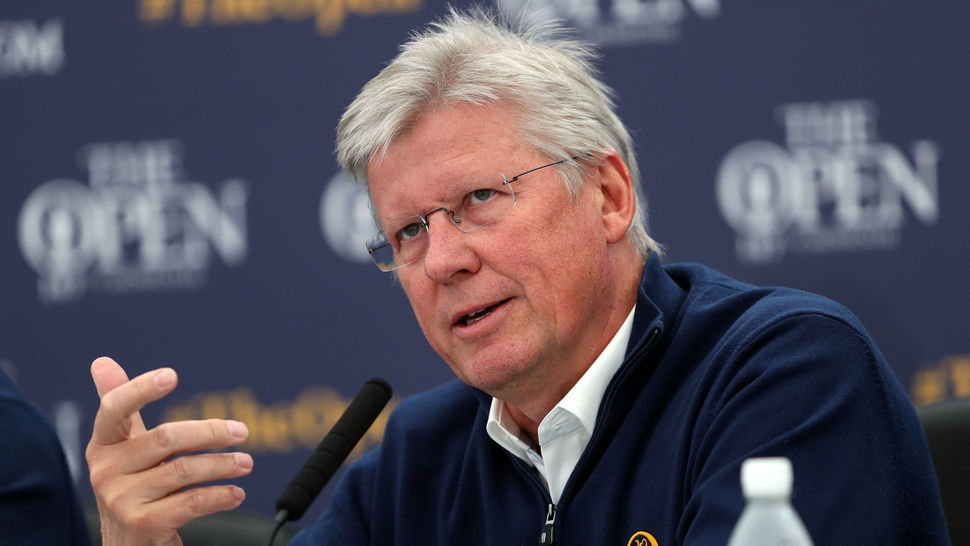Bifurcation. The single word all of the key stakeholders in golf wanted to avoid is now front and center. The USGA’s and R&A’s Tuesday announcement never mentioned the word bifurcation and instead used a back door mechanism via a “Model Local Rule” (MLR) adoption as a way to bring into being a new golf ball standard that will certainly place key stakeholders at odds with one another.
The actual start date for the new initiative will not take place until January 2026 at the earliest and only deals with golf balls, not golf clubs. Both rules making bodies will now provide for a Notice and Comment period thru mid-August.
The issues go beyond the facts of just how far golf balls are flying today which is indisputable. When John Daly led the PGA TOUR in driving distance in 1997, he was the first and only player topping the 300-yard plateau. Last year Cameron Champ was the leader at just over 321 yards. In total, 99 players were above the 300-yard mark for the ’21-’22 season.
Keep this in mind, in 1997 the average PGA TOUR tee shot was 268 yards. For the ’21-’22 season that number is just over 299 yards. When Tiger Woods won his first Green Jacket in 1997 the length of Augusta National was 6,925 yards. For the upcoming ’23 Masters the new length will be 7,545 yards. Is it inevitable that at some near time frame, courses at the elite championship level cross 8,000 yards?
-
The USGA and R&A as referees
When the USGA and R&A brought forward their Distance Insights Report in February 2020 the concerns of golf’s two leading rules bodies were straightforward.
The continuing escalation in distance is “undesirable and detrimental to golf’s long-term future.” The concerns were more than just about the conditions needed for elite competitions but the economic and environmental factors becoming more and more impactful for all golf courses.
What’s crucial to understand is that while different groups can agree about certain aspects of the issue in question, coming to terms with how a solution can be enacted which all can support and abide by is quite another story.
The real test will be if the key stakeholders can work with one another on such a sensitive topic that cuts to the core of what each major group is involved with doing.
It’s been said countless times that before people focus on the general interest, they will outline their own self-interest first.
The USGA and R&A have the unenviable role of serving as the sport’s referees. Coming forward with any announcement on the subject of the distance golf balls travel would undoubtedly generate pushback from other key stakeholders within the sport. And such statements came quickly.

Related: Governing bodies aim to ‘bring the game along with us’ in shorter ball proposal
-
Bottom Line Realities
Acushnet, the maker of Titleist golf balls, the largest most used golf ball line in the sport stated a clear desire not to have golf bifurcated with balls produced for elite players and others for the masses.
“Playing by a unified set of rules is an essential part of the game’s allure, contributes to its global understanding and appeal, and eliminates the inconsistency and instability that would come from multiple sets of equipment standards,” said David Maher, president and CEO of Acushnet.
“Unification is a powerfully positive force in the game, and we believe that equipment bifurcation would be detrimental to golf’s long-term well-being. As a result, we will actively participate in this conversation with the governing bodies, worldwide professional tours, PGA Professional organizations, amateur associations and federations, and golfers, in an effort to contribute to the continued enjoyment and growth of the game.”
The reality is that Titleist does not want to see its overall connection to the broader consumer market split with those at the highest of levels playing one ball and the rest playing something else. The dollars derived for Titleist via its extensive marketing campaigns apply to the other key golf ball companies and they are significant to the global tune of over a billion dollars annually with projected growth rising to $1.8 billion by 2032. Add that up and it’s a lot of cash.
Having Scottie Sixpack playing the same ball as Scottie Scheffler is an essential marketing strategy that goes beyond simple unification but overall company profits. Hard to imagine any of the key golf ball companies eager to produce two different types of balls. Rest assured, companies will not surrender easily and the possibility for future litigation on the subject cannot be so quickly dismissed.
The most interesting comments came from the PGA TOUR, home to the sport’s deepest array of talent with weekly events seen globally.
“We continue to work closely with the USGA and The R&A on a range of initiatives, including the topic of distance. Regarding the Notice to Manufacturers announced today, we will continue our own extensive independent analysis of the topic and will collaborate with the USGA and The R&A, along with our membership and industry partners, to evaluate and provide feedback on this proposal.
The Tour remains committed to ensuring any future solutions identified benefit the game as a whole, without negatively impacting the Tour, its players or our fans’ enjoyment of our sport.”
The key element with that statement rests with the beginning of the final sentence. The emphasis on “benefit the game as a whole.”
The PGA TOUR and the major equipment companies have a close relationship and it’s highly unlikely either will go forward in support of the new proposal without being on the same page.

-
The Major Championships
The USGA and R&A cannot mandate anything outside the events they administer. The proposed golf ball rules would not take effect until 2026 and if that should happen major events such as the U.S. Open and The Open Championship would each be covered.
But would other events the USGA and R&A administer be also covered? That was not stated with certainty and remains unclear although both rules making bodies stated that women’s golf would not be impacted.
Yet, it’s important to wonder, would officials at Augusta National follow suit? Masters Chairman Fred Ridley when asked at his 2019 press conference stated he saw no need in creating a specific Masters golf ball that went lesser distances. Does his position remain in place given the USGA / R&A action? What about the PGA of America and its involvement with the PGA Championship and Ryder Cup?
The PGA of America issues its own statement:
“As we have previously stated to the USGA and the R&A,” the PGA of America announced, “we are strongly opposed to any rules changes that will make the game less fun for recreational golfers. Regarding this specific area of interest, we are pleased that there is no longer a focus on changing or modifying the ball or clubs that recreational players may use. We are not in favor of bifurcation and do not anticipate individual clubs implementing such a Model Local Rule as it is meant for elite players. In regards to the PGA Championship, 2026 is still a long way off and until we know the specifics of the proposed Model Local Rule we are not in a position to make that determination.”
No question, when the two other major events are is played this year, you can be sure Ridley and PGA of America CEO Seth Waugh will be asked to give their viewpoints on how they see this playing out with the respective marquee event they run.
https://twitter.com/RandA/status/1635627044942880768?ref_src=twsrc%5Etfw%7Ctwcamp%5Etweetembed%7Ctwterm%5E1635627044942880768%7Ctwgr%5E03f029a7c306b2ce22a152a187540f7c0ec94d61%7Ctwcon%5Es1_c10&ref_url=https%3A%2F%2Fpublish.twitter.com%2F%3Fquery%3Dhttps3A2F2Ftwitter.com2FRandA2Fstatus2F1635627044942880768widget%3DTweet
-
How will elite status be defined?
The new standard of elite level play is now going to require a much deeper dive. Will it be just the players in competition via the professional tours? Will it apply to the highest caliber amateur events at the collegiate level and will such a connection apply downward to the regional and state levels?
Other questions remain. Will players who have secured a handicap with the previous existing ball type be able to use such scores to gain entry into a qualifying event where the new type golf ball is mandated for usage?
One must also examine how the myriad of various golf associations that exist under the USGA and R&A will implement such designations for the competitions they administer. Consistency on the actions taken will now be a central issue of concern.
Sorting through this will prove to be an exasperating matter for all parties involved.
-
The Persuasion Business –
The USGA and R&A will need to hit the road and attempt to sell the proposal they’ve announced. Clearly, the lead people with each group, Mike Whan and Martin Slumbers respectively, were quick to emphasize recreational players will not be impacted.
Both major rules making organizations know fully well that they cannot command anyone to do anything. They must persuade separate groups to see the mutual benefit that comes with what’s been proposed.
This will be a hard sale because the interests of certain organizations and companies rest on other factors that they may not wish to see end.
The capacity to make profits is certainly present and the willingness to engage in creating a new line of golf balls that go shorter distances may not have an immediate appeal, if at all.
The USGA and R&A knew full well movement away from the status quo would generate plenty of interest. Some of that resistance may be temporary but others may now see the writing on the wall and only dig their heels deeper into the ground and refuse to budge.
Golf for many years has benefited from having rules that apply to all players at any level. Bifurcation is now at hand and it’s one the USGA and R&A believe is crucial to the sport’s future, even if they opt to forego using the word officially.
You can count on various other stakeholders quickly pointing out why such a solution is unworkable. The initial statements released already indicate the debate on this topic is just getting started and far from settled.
The words of Betty Davis from the 1950 film All About Eve are most fitting for what lies ahead.